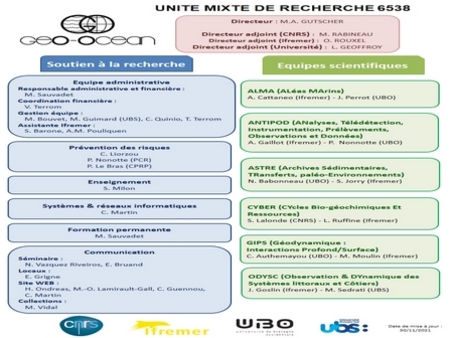The CTD-rosette
The CTD-rosette, or hydrocast, is the most suitable exploration tool to search and study hydrothermal plumes. It is a seawater sampler with sensors that records physical and chemical data along the water column, and samples seawter in 8 liters Niskin bottles at different depths from the bottom to the surface.
The principal parameters measured by the CTD are the conductivity, temperature and absolute pressure (depth). From these parameters are calculated other oceanographic fundamental parameters like salinity or sound velocity in seawater that helps calibrating the ship’s multibeam echosounders.
On the HERMINE cruise, the lab’s CTD-rosette is equipped with:
- a nephelometric sensors that measure the quantity of particles in suspension in the seawater and reveal the presence of a hydrothermal plume,
- a LADCP loaned by the DT-INSU to evaluate the strength and direction of deep-sea currents along the water column,
- an in-situ Mass spectrometer developped by the Harvard University in collaboration with Ifremer that can detect the presence of important gas concentrations,
- A USBL acoustic beacon ensure a precise positionning of the hydrocast in the water column.
The hydrocast can be deployed to sample along vertical profiles, like the exploration phase of the HERMINE cruise, or along yo-yo profiles to study a specific hydrothermal plume like TAG’s one. In that case, the CTD is lowered down and brought up in the water several times while the ship is moving slowly.
Once onboard, scientists are busy collecting sampled seawater from the Niskin bottles for onboard analysis (methane and manganese) and for further land based analyses.

